Spiritual Successors
Top 10 Best Spiritual Successors of All-Time!
Ideally, every great game would be given an equally-awesome sequel. However, this is not always possible. Problems with licensing, changes within development teams, and contractual issues with publishers often make it unrealistic for certain games to be given proper sequels. Additionally, market demand (or lack thereof) can make it difficult to justify making sequels for certain games. This list honors follow-ups that share themes and styles with previous games without being directly related to them. While some of the games were enough to hold us over in the absence of a “true” sequel, others were so good that they made us forget about their precursors altogether.
Examples: Grand Tour, Corpse Bride, The Wonder Years
10
Maximo: Ghosts to Glory
Successor to Ghouls ‘n Ghosts
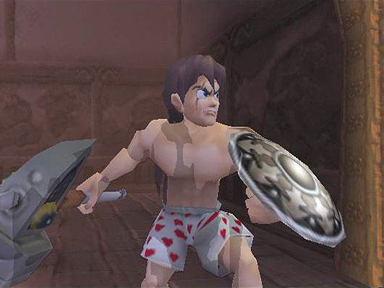
Ghosts n’ Goblins was one of Capcom’s first big hits, and the subsequent Ghouls n’ Ghosts games saw similar success. After the release of Super Ghouls n’ Ghosts in 1992 and the spinoff, Demon’s Crest, in 1994, the series took an extended break. Capcom planned to revive the series on the Nintendo 64 by merging the Ghosts ‘n Goblins universe with designs from manga artist Susumu Matsushita. Plans for the N64 game were put on the shelf, however, and the project was moved to the PlayStation 2. The resulting game, Maximo, shares several common themes with the Ghosts games, including creepy graveyard settings and a “save the princess” storyline. Maximo‘s extreme difficulty was another throwback to the Ghosts games. Maximo even contained orchestrated remixes of tracks were previously used in Ghouls ‘n Ghosts and Ghosts ‘n Goblins! Of course, one of the most obvious connections between the games is the fact that the lead character’s protective suit of armor can be knocked off – forcing him to fight on wearing nothing but his boxer shorts. Maximo sold well enough to warrant a sequel in 2003, but plans for a second sequel were cancelled. The Maximo series has faded away, but its precursor rose from the grave with the 2006 release of Ultimate Ghosts ‘n Goblins for the PSP.
9
Ikaruga
Successor to Radiant Silvergun
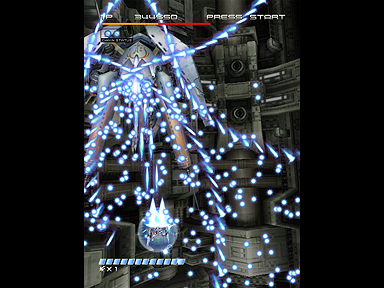
Radiant Silvergun is an intense vertical shooter from Treasure that was released in arcades and on the Saturn. The game was known for an interesting color-based scoring system. The enemies in the game were classified into one of three color groups, and extra points could be awarded by shooting down multiple enemies of the same color. This created an unusual dynamic in which players were actually encouraged to avoid shooting certain enemies. Three years later, Treasure took this theme to another level in Ikaruga. Like Radiant Silvergun, Ikaruga is an overhead shooter with intense visuals and epic boss battles. Ikaruga greatly expanded upon Silvergun‘s intriguing color-based scoring system. All ships in Ikaruga (including your own) are classified as either black or white. If your ship is white, it will be able to absorb bullets fired by white enemies. Additionally, its attacks will be twice as effective against black enemies. Naturally, the reverse is also true. The player can change the color of their ship on the fly, and the entire game is based on choosing the appropriate ship color for each situation. The majority of games in the genre encourage players to shoot everything in sight, so it’s always nice when games like Radiant Silvergun and Ikaruga are able to shake things up.
8
NBA Jam
Successor to Arch Rivals
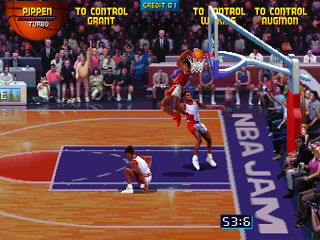
Before EA Sports came along and tried to ruin everything with their whole “if it’s in the game, it’s in the game” schlock, sports games actually used to be fun. Instead of aiming for realism, sports-based video games used to aim for entertainment value. Arch Rivals is a prime example of this. Released by Midway in 1989, Arch Rivals billed itself as “Basket Brawl.” Instead of trying to emulate a real sport, the game encouraged players to bend the rules of basketball. Arch Rivals utilized a two-on-two format, and players were allowed to punch their rivals in the face in order to steal the ball from them. Several years later, Midway used a similar format for NBA Jam. There were several differences between the games – NBA Jam, regrettably, didn’t allow players to pull down the referee’s pants – but the basic two-on-two structure was still in place, as was the focus on physicality. The biggest difference between the games was that NBA Jam was officially licensed by the NBA and featured digitized likenesses of real players. Thanks largely to the NBA license, NBA Jam was much more successful than its predecessor.
7
Flashback
Successor to Out of This World
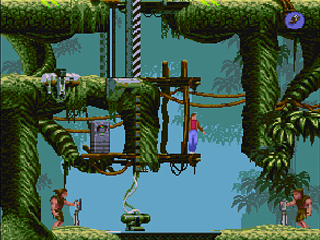
Flashback is a cinematic platformer with a sci-fi theme and a strong emphasis on puzzles. Instead of running blindly into dangerous situations, players are strongly encouraged to plan ahead. Stealth is often required to progress through the game and players will have to be extremely mindful of their surroundings and the placement of their enemies. During development, Flashback was often mistaken as the sequel to Out of This World by the gaming press. After all, the games had the same developer and shared many gameplay elements with one another. However, the games had no connections with respect to their storylines or characters. The silky-smooth rotoscoped animation and environmental puzzles in Flashback were familiar, but the game’s lush visuals and use of color stood out from the minimalistic art style used by Out of This World. A direct sequel to Out of This World (entitled Heart of The Alien) was released on the Sega CD in 1994. Heart of the Alien was developed without the participation or approval of the original game’s designer, however, so a case could be made that Flashback is still the true successor to Out of This World.
6
Odin Sphere
Successor to Princess Crown
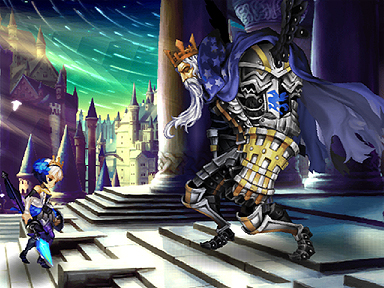
Princess Crown is a side-scrolling action RPG from Atlus that was released on the Saturn in 1997. The game was praised for its interesting characters and gorgeous graphics, and its 2D gameplay holds up better than most 3D games of the era. The game was released exclusively in Japan, however, so most people reading this probably never had the opportunity to play it. Fortunately, the team that made the game would go on to form their own company called Vanillaware that specialized in breathtaking 2D games. Odin Sphere was originally conceived as a proper sequel to Princess Crown, but the project took on an identity of its own during development. That said, the Princess Crown influence is still apparent in the final product. The games have the same art style, they both blend action with RPG elements, and even the inventory systems are similar. You could probably transplant characters from one game to another without anyone noticing. Odin Sphere is ultimately a much faster game, and it makes the deliberate pacing of its predecessor seem almost sluggish in comparison. Vanillaware director George Kamitani has described 2013’s Dragon’s Crown as the first true successor to Princess Crown, but Odin Sphere can still be viewed as a spiritual successor.
5
Perfect Dark
Successor to GoldenEye 007
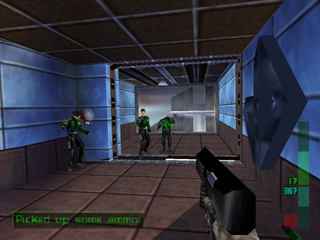
In 1997, GoldenEye helped revolutionize the first-person shooter genre, picked up numerous Game of the Year awards, and became one of the best selling-games of its generation. Since Nintendo didn’t retain the Bond license, it was not possible for the game to get a proper sequel. Instead of a direct follow-up, Rare opted to create a brand new IP. Perfect Dark was built off the GoldenEye engine, so its control scheme was largely unchanged. Despite the new futuristic setting, the levels in the game are still designed in a way in which stealth is encouraged but not necessarily required. As an English spy, Joanna Dark shared many similarities with James Bond and had all sorts of interesting weapons and gadgets at her disposal. This is not to say that the game didn’t bring anything new to the table. Each weapon in Perfect Dark was given a second function. Perfect Dark also put more emphasis on the multiplayer aspects by introducing a new co-op mode and adding computer-controlled “bots” to the death matches. Unfortunately, Rare was a little too ambitious with respect to the game’s visuals. Real-time lighting effects and high-res graphics sound good on paper, but the N64 had trouble running the game even with the Expansion Pak installed. Rare was known for pushing the N64 to their limits, but they pushed it beyond its limits with Perfect Dark. Despite its shortcomings, Perfect Dark was an excellent game that did GoldenEye proud. It’s just unfortunate that Perfect Dark Zero didn’t continue the trend.
4
Bioshock
Successor to System Shock
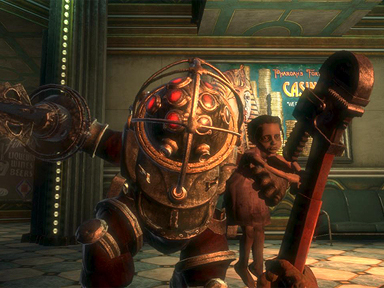
Bioshock was one of the highest rated games of 2007 and received almost universal praise for the way it blended elements from FPS’s, RPGs, and survival/horror games. The game was produced by the developers of the System Shock series, and was intended to be a spiritual successor of System Shock 2 from the very beginning. Bioshock and System Shock 2 both feature modifiable weapons, and both are designed in a manner that encourages ammunition conservation. The ability to hack into security cameras, sentry guns, and robotic drones is present in both titles as well. Additionally, the “plasmids” in Bioshock essentially serve the same function as the “Psionic Abilities” in System Shock 2, and phantom images that replay tragic incidents of the past also play a role in both games. There are even similarities with respect to the storytelling aspects of the game. The games both feature a character who guides the player through the game via radio transmissions, and both are involved in a shocking plot-twist mid-way through the game. The System Shock series has seen no signs of life since 1999, but Bioshock has received multiple sequels of its own.
3
DOOM
Successor to Wolfenstein 3D
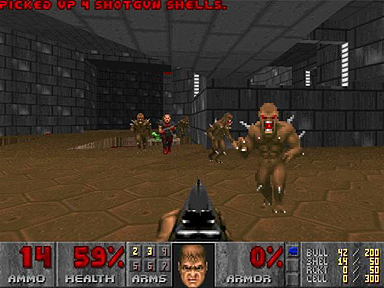
In 1992, id Software’s Wolfenstein 3D marked a monumental leap forward for the first-person shooter genre. While id Software had previously experimented with 3D games (such as Hovertank 3D), Wolfenstein 3D set a new standard for both graphic quality and graphic violence. 18 months after the release of Wolfenstein, id Software set the bar even higher with the release of DOOM. DOOM‘s visuals were unparalleled in 1993, and the game improved upon Wolfenstein in several areas. For instance, the game featured texture mapping on all surfaces, boasted impressive lighting effects, and offered for more variety with respect to level layouts and room sizes. Like Woldfenstein 3D before it, DOOM was released as shareware to increase its distribution. DOOM was highly anticipated before its release and was downloaded by an estimated 10 million people within two years. The game took the spotlight away from Wolfenstein 3D and became the quintessential PC game of the mid ’90s. It’s impact on the industry cannot be overstated. For years, first-person shooters were simply referred to as “DOOM clones.”
2
Double Dragon
Successor to Renegade
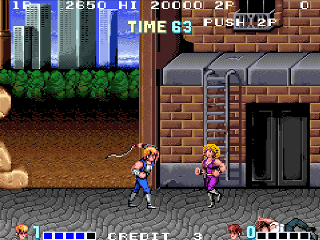
Double Dragon was initially conceived by Technos as a sequel to Renegade. Renegade was one of the most influential games of its era and introduced several trademarks to the beat ’em up genre. Double Dragon was released one year later and took the genre to a completely different level. One of the new features introduced in Double Dragon was the ability to pick up your enemies’ weapons after disarming them. The level designs in Double Dragon were also significantly more complex than in Renegade, and were filled with pitfalls, moving treadmills, and an assortment of other obstacles to avoid. Of course, the single most important convention brought forth in Double Dragon was the option for two people to play at the same time. Anyone familiar with beat ’em ups can tell you that they are almost always better when played with a friend. Largely because of the multiplayer support, Double Dragon was one of the most successful arcade games of its day. While Renegade would later spawn several direct sequels, the Double Dragon franchise took on a life of its own.
1
Resident Evil
Successor to Sweet Home
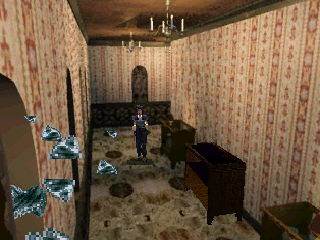
While Resident Evil certainly helped popularize survival/horror games, it was not the first in the genre. In fact, the game had many similarities to a 1992 PC game called Alone in the Dark. I’m not recognizing Resident Evil on this list due to its relationship with Alone in the Dark, however. Rather, I’m mentioning the game due to its connection with a relatively unknown Capcom game called Sweet Home. Based off a movie of the same name, Sweet Home was released on the Famicom in 1989 and never made it outside of Japan. Although Sweet Home was played from an overhead perspective and employed a turn-based battle system, there were many aspects of the game that served as inspiration for the Resident Evil series. When Capcom veteran Tokuro Fujiwara first approached Shinja Mikami about developing a new survival/horror game for the PlayStation, he specifically requested a game that would use Sweet Home as its inspiration. This was right up Mikami’s alley, as he considered Sweet Home to be a masterpiece. Resident Evil had a unique story and characters, but the mansion setting, puzzles, and even the infamous “door” loading sequences were all borrowed from Sweet Home.

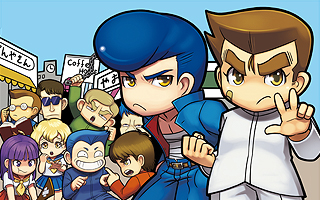
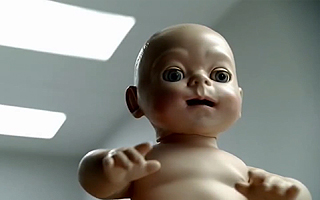
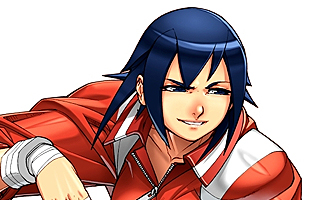
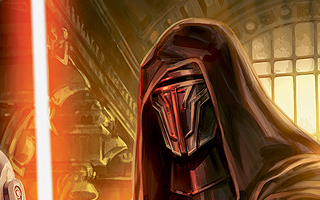
Do you agree with this list? Let us know what you think by leaving a comment below. Your opinion matters!